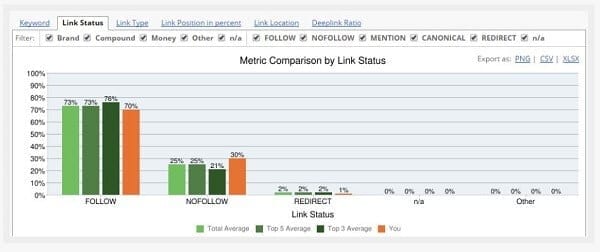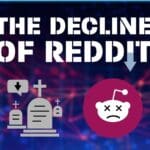What is a NoFollow Link?
- 1 What is a NoFollow Link?
- 2 What about DoFollow links?
- 3 Who uses NoFollow links?
- 4 What Does Google Have to Say on NoFollow Links?
- 5 Do NoFollow Links Affect Your SEO?
- 6 Importance of Understanding Which Links Are Follow and Which Are NoFollow
- 7 Understanding and Optimising Your Follow/NoFollow Link Profile
- 8 Discuss SEO with Opace
Introduced in 2005 as a means to reduce the amount of spamdexing and improve the quality of search results, the NoFollow attribute was made available to give webmasters better control over their linking. An example of a NoFollow link would be:
<a href=”awebsite.com” rel=”nofollow”>Click here</a>
Crucially, a NoFollow link indicates to search engines that the link should not be followed and shouldn’t not provide any ‘link juice’ to benefit the linked page’s SEO. In a nutshell, it tells Google that this is simply a link for humans to follow and not search engines.
What about DoFollow links?
Technically speaking there is no such thing as a DoFollow attribute or tag. All links are followable by default and only become NoFollow if the rel=”nofollow” tag is applied as shown in the above example.
Who uses NoFollow links?
Used initially by webmasters in their forums, comments and other user submission engines, NoFollow links were thought to reduce the amount of spam. Nowadays, most websites apply the NoFollow tag as standard to any links they add within their content. In 2013, use of NoFollow attributes became even more widespread when Google announced that links within press releases should be made NoFollow in the same way as paid links.

Google Penguin Update, designed to reduce spam, does not use NoFollow links. Image via Flickr.
What Does Google Have to Say on NoFollow Links?
Google Webmasters YouTube Channel states that NoFollow links cannot harm a sites reputation. However, they do go on to say that if you are being viewed as a source of spam by posting on hundreds of blogging sites and enough people complain, then Google may take manual action against you and your site. It is worth pointing out that this would have to be on a mass scale to be considered abuse. This is also more of an issue with the SEO strategy than NoFollow links being a problem in themselves.
Do NoFollow Links Affect Your SEO?
Effectively, Google maintains that NoFollow links are not used in their algorithm, albeit many experts believe NoFollow links do have a marginal and ever-increasing impact on SEO rankings. A common misconception is that NoFollow links can’t drive traffic, well they can, and the traffic they provide can still be seen using tools like Google Analytics. NoFollow links can even be seen in your Google Search Console account. In fact, some of the highest quality websites on the Internet provide great quality traffic via NoFollow links, Wikipedia being an example.
As a general “rule of thumb” it will always be better to have a NoFollow link from a high-authority relevant website rather than a low-authority DoFollow link from a largely irrelevant website. Although the NoFollow link is unlikely to positively impact your Domain Authority in the same way as a DoFollow link, it will still be useful in driving relevant traffic to your website and various case studies have shown that including NoFollow links within your link building strategy will help to improve your rankings. They’re also important as Google will expect you to have a natural link profile, consisting of both NoFollow and DoFollow links, as well as various other factors such as natural/varied anchor text. Websites that strive for DoFollow links only will ultimately end up getting penalised and may find it very difficult to recover.
Importance of Understanding Which Links Are Follow and Which Are NoFollow
Many organisations are fooled into believing they are generating DoFollow links which then turn out to be NoFollow links. So, the key to this is understanding where the NoFollow links are generated and how. Plenty of people utilise social networking sites like Facebook and Pinterest to publish/share links to their URLs. Most do so because they believe that generating links like these will not only be a useful source of traffic generation for their site but also to produce influential backlinks for SEO. The fact is that the links published by many of these sites automatically convert the URLs to NoFollow links, some platforms like LinkedIn even add JavaScript redirects. To find out whether this is happening, check the source code (click ‘view source’ or ‘inspect’) and look for the code rel=“nofollow”. Generating links on social media could be less fruitful than you think due to the automatic conversion to NoFollow links.
Understanding and Optimising Your Follow/NoFollow Link Profile
This doesn’t mean that posting to social media sites like Facebook aren’t important. Nor does it mean that NoFollow links aren’t useful in their own right to create organic growth. However, being aware of the difference between the two is important and understanding the need for a good ratio is critical.

A good ratio of nofollow/follow links is important.
Again, the quality rather than the quantity of your links is an essential part of an effective SEO plan.
Discuss SEO with Opace
To find out more about how to optimise your SEO to take advantage of high quality backlinks contact Opace today to discuss your strategy on 0845 017 7661.

![Seo content creation guide for good content - why good content matters: seo content creation guidelines [updated] Seo content creation guidelines for good content](https://www.opace.co.uk/wp-content/uploads/2024/03/SEO-content-creation-guide-for-good-content-150x150.jpeg)




0 Comments